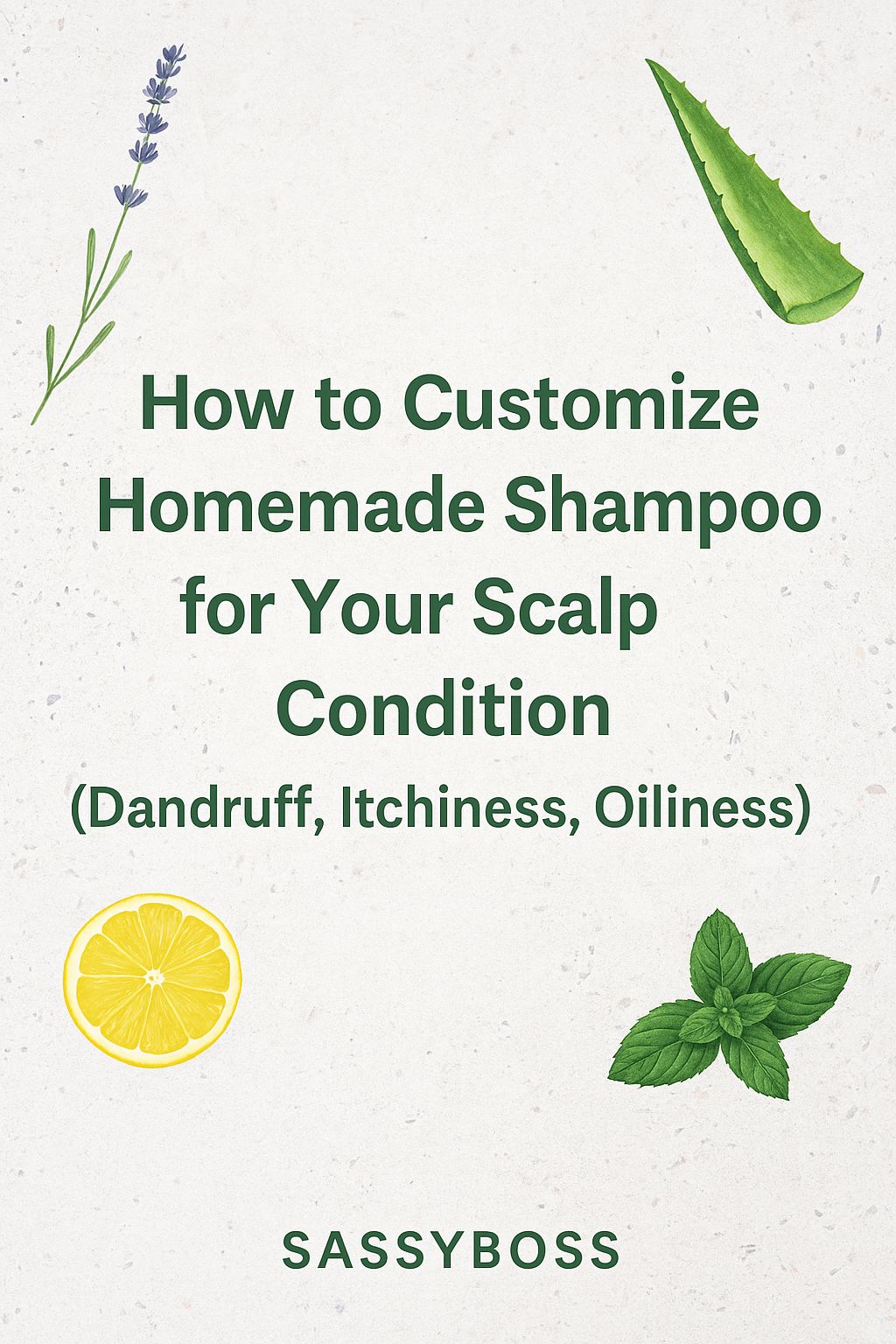How to Customize Homemade Shampoo for Your Scalp Condition (Dandruff, Itchiness, Oiliness)
In the age of natural living and holistic wellness, homemade shampoos are quickly becoming a favorite among those who want to take control of what goes on their scalp. However, not all scalps are created equal—some struggle with dryness and flakes, while others battle excess oil or sensitivity. The good news? You can customize your homemade shampoo to suit your scalp’s unique needs.
In this post, we’ll dive into simple, effective ways to tailor your shampoo recipe based on your scalp condition—be it dandruff, itchiness, or oiliness. Let’s unlock the secrets to healthy, balanced hair, naturally.
🌿 Why Customize Your Shampoo?
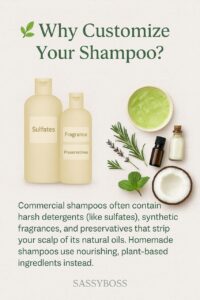
Commercial shampoos often contain harsh detergents (like sulfates), synthetic fragrances, and preservatives that strip your scalp of its natural oils, disrupting its balance. Homemade shampoos allow you to skip these harmful additives and instead use nourishing, plant-based ingredients.
However, going natural doesn’t mean one-size-fits-all. Just like skincare, your scalp needs targeted care—whether it’s calming inflammation, reducing oil, or treating flakiness.
🧖♀️ Scalp Condition #1: Dandruff
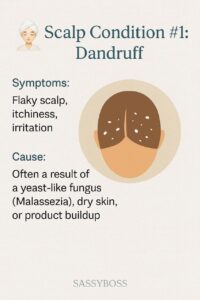
Symptoms: Flaky scalp, itchiness, irritation
Cause: Often a result of a yeast-like fungus (Malassezia), dry skin, or product buildup.
🌼 Best Ingredients for Dandruff:
• Apple Cider Vinegar (ACV): Antifungal and pH-balancing.
• Tea Tree Essential Oil: Natural antifungal and antibacterial properties.
• Aloe Vera Gel: Soothes inflammation and hydrates dry scalp.
• Neem Powder: Known for its strong antifungal benefits in Ayurvedic medicine.
🧴 DIY Dandruff-Fighting Shampoo Recipe:
• 1/4 cup Castile soap (unscented)
• 1 tbsp ACV
• 1 tbsp aloe vera gel
• 10 drops tea tree oil
• 1/2 tsp neem powder (optional)
Mix and shake well before each use. Use 2–3 times a week for best results.
🌿 Scalp Condition #2: Itchy or Sensitive Scalp
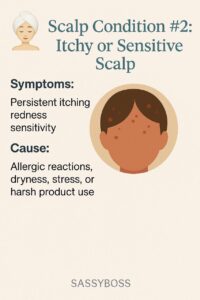
Symptoms: Persistent itching, redness, sensitivity
Cause: Allergic reactions, dryness, stress, or harsh product use.
🌸 Best Ingredients for Sensitive/Itchy Scalp:
• Chamomile Tea: Soothes irritation and reduces inflammation.
• Lavender Essential Oil: Calms the skin and has antiseptic properties.
• Coconut Milk: Rich in moisture and gentle on the scalp.
• Honey: A natural humectant with antibacterial properties.
🧴 Soothing Shampoo Recipe:
• 1/4 cup Castile soap
• 1/4 cup chamomile tea (cooled)
• 1 tbsp coconut milk
• 1 tsp raw honey
• 8 drops lavender essential oil
Shake before use. Apply to wet scalp and massage gently. Rinse thoroughly.
💧 Scalp Condition #3: Oily Scalp
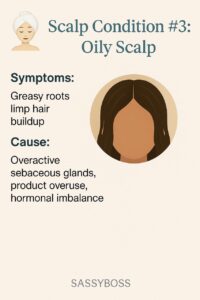
Symptoms: Greasy roots, limp hair, buildup
Cause: Overactive sebaceous glands, product overuse, hormonal imbalance.
🍋 Best Ingredients for Oily Scalp:
• Baking Soda: Absorbs oil and exfoliates the scalp (use sparingly).
• Lemon Juice: Astringent that controls oil and clarifies.
• Green Tea: Reduces oil production and calms inflammation.
• Peppermint Essential Oil: Balances sebum and provides a fresh feel.
🧴 Oil-Control Homemade Shampoo:
• 1/4 cup Castile soap
• 1/4 cup cooled green tea
• 1 tbsp lemon juice
• 1 tsp baking soda
• 8 drops peppermint oil
Use 1–2 times per week. Avoid daily use, as over-cleansing can trigger more oil production.
📝 Tips for All Scalp Types:

1. Do a Patch Test First: Natural ingredients can still cause reactions. Test a small amount on your arm before applying to your scalp.
2. Adjust Frequency: Homemade shampoos are often gentler but more concentrated. Use 2–3 times a week or as needed.
3. Store Properly: Keep shampoo in a dark, cool place, and use within 1–2 weeks unless stored in the fridge.
4. Follow with a Natural Conditioner: Rinse with diluted apple cider vinegar or use aloe vera gel as a light conditioner.
💬 Final Thoughts
Customizing your shampoo based on your scalp condition is not only effective but also empowering. You get to choose what goes into your hair care—and what stays out. Whether you’re battling flakes, itching, or oil, nature offers plenty of gentle yet powerful ingredients to bring your scalp back to balance.
So, the next time you reach for your shampoo bottle, ask yourself: “What does my scalp need today?” Then mix accordingly—and enjoy the transformation, one wash at a time.
